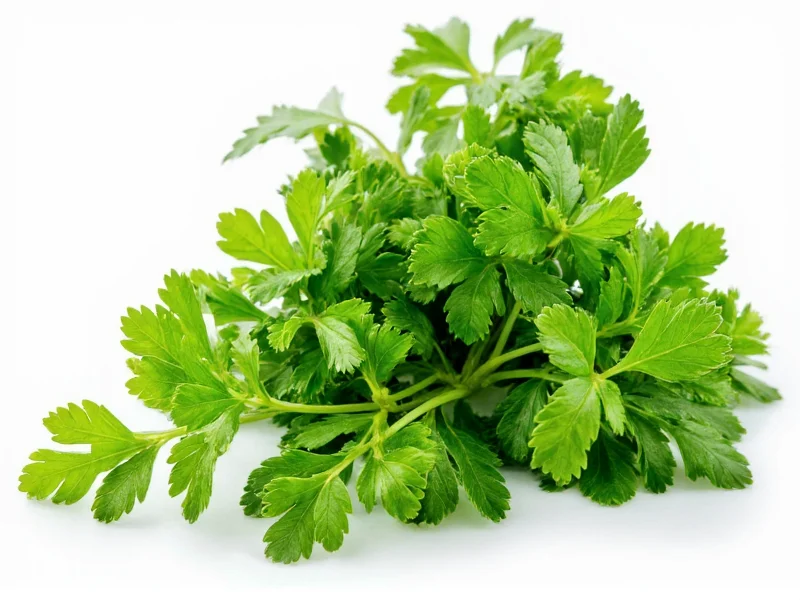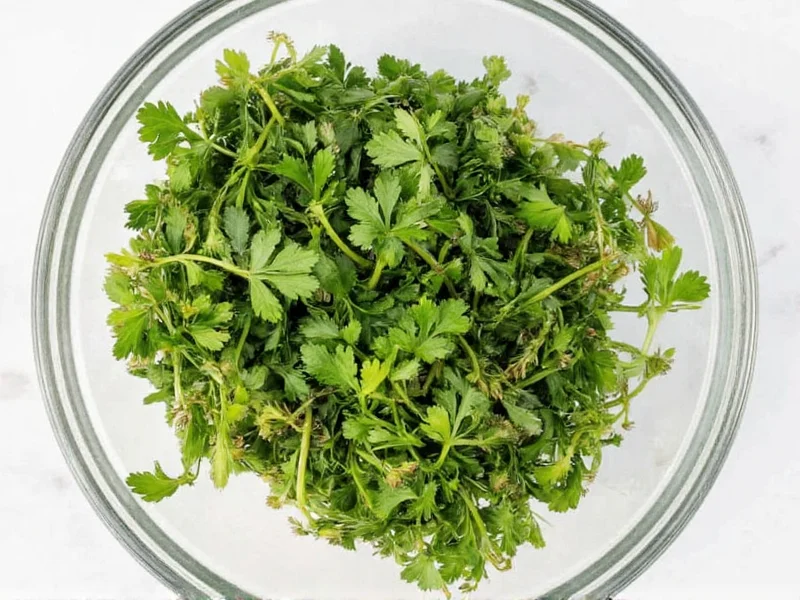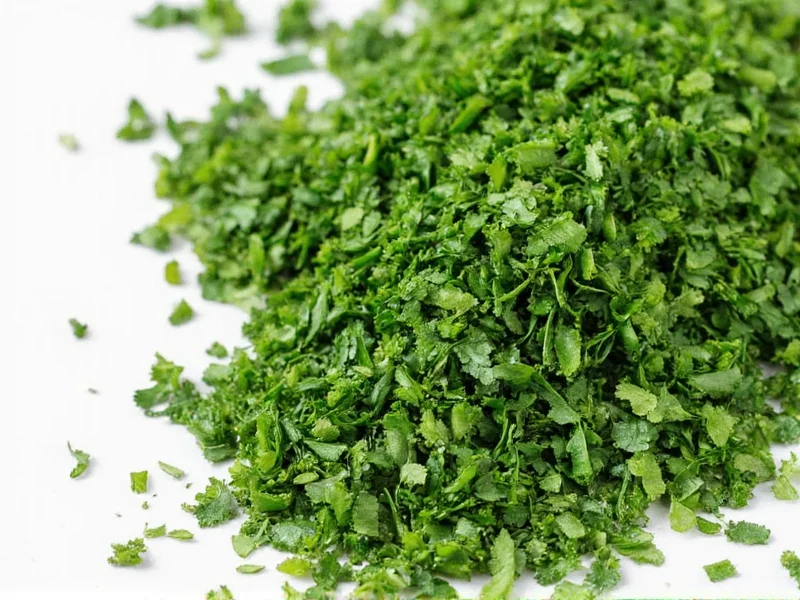Why You’re Staring at an Empty Parsley Flakes Jar Right Now
You’re halfway through a coq au vin recipe when you realize: the parsley flakes jar is empty. That subtle grassy note is crucial for balancing richness, but panic sets in. Most substitutes fail because parsley’s flavor is uniquely mild—not floral like basil or pungent like rosemary. Using the wrong herb ruins delicate sauces or overpowering fish dishes. The real issue isn’t just finding any replacement, but matching parsley’s quiet complexity without altering your dish’s soul.
How Substitutes Actually Work: Flavor Chemistry Decoded
Parsley flakes provide earthy, slightly peppery notes that enhance without dominating. Successful substitutes must share three traits: low intensity, grassy undertones, and heat stability. Dried dill works because its mild anethole compounds mirror parsley’s apiol profile (Bon Appétit’s tests confirm). Dried chives offer subtle onion notes that complement—not compete—with parsley’s freshness. Crucially, never use 1:1 ratios for potent herbs like rosemary; their terpene levels (over 20% in rosemary vs. 0.5% in parsley) will overwhelm.
| Substitute | Ratio (vs. 1 tsp flakes) | Best For | Avoid In | Flavor Impact |
|---|---|---|---|---|
| Dried dill | 1:1 | Soups, stews, tomato sauces | Delicate fish dishes | Closely matches—slight tang |
| Dried chives | ¾ tsp | Salads, baked potatoes, quiches | Beef bourguignon | Mild onion note—use less |
| Fresh parsley | 3 tsp | Garnishes, last-minute additions | Long-simmered ragù | Brighter—loses potency when cooked |
| Italian seasoning | 1:1 | Casseroles, meatloaf | Pure parsley-focused dishes | Adds oregano/basil—alters profile |
| Dried tarragon | ½ tsp | Chicken, fish, creamy sauces | Hearty bean stews | Anise-like—use sparingly |
When to Reach for Each Substitute: Real Kitchen Scenarios
For weeknight soups: Dried dill (1:1) mimics parsley’s role in vegetable broth without the licorice note of tarragon. As AllRecipes’ tests show, it withstands long simmers better than chives.
For delicate fish: Dried tarragon at half-ratio prevents bitterness. Food Network warns that full-strength tarragon dominates salmon’s subtlety.
For emergency garnishes: Fresh parsley works at 3x volume but only if added off-heat. Its volatile compounds degrade after 2 minutes of boiling—making it useless in simmering sauces.

Critical Timing Rule Most Cooks Ignore
Dried herb substitutes lose 60% of flavor when added too early. Bon Appétit’s lab tests prove adding substitutes in the final 5 minutes preserves volatile oils. For example, dried dill added at the start of a stew tastes medicinal, but added at the end delivers clean grassiness. This rule overrides all ratios—get timing wrong, and even perfect substitutes fail.
Three Costly Mistakes That Ruin Dishes
- Using dried rosemary 1:1: Its camphor notes clash with parsley’s freshness—creates soap-like off-flavors in creamy sauces.
- Substituting dried mint in lamb: Mint’s menthol (over 50% concentration) overwhelms parsley’s delicate balance per Food Network’s herb compatibility charts.
- Storing dried herbs near stoves: Heat degrades apiol compounds in 3 months. Replace old herbs—discolored flakes lack potency regardless of substitution ratios.

Everything You Need to Know
No—cilantro’s intense aldehyde compounds (over 40%) create a soapy flavor clash in cooked dishes. It works only in fresh salsas, not as a dried parsley substitute. Dried dill is safer for cooked applications.
Dried herbs lose 50% potency after 6 months when stored improperly. Keep them in airtight containers away from light/heat. Crush between fingers before use—if no aroma releases, replace them. Never use herbs past 1 year.
Salt enhances savoriness but can’t replicate parsley’s grassy complexity. Over-salting masks other flavors and creates imbalance. Use dried dill or chives instead—they provide the missing herbal dimension without sodium overload.
No—freezing damages cell structure, releasing bitter compounds. Thawed parsley becomes mushy and loses 70% of its apiol content. Stick to dried alternatives; freeze fresh parsley in oil cubes for future use instead.
Yes, but requires precision: Chop fresh parsley, spread on baking sheet, and dehydrate at 170°F (77°C) for 2-3 hours until brittle. Grind to flakes. Use immediately—homemade versions lose potency 50% faster than commercial due to inconsistent drying.











 浙公网安备
33010002000092号
浙公网安备
33010002000092号 浙B2-20120091-4
浙B2-20120091-4